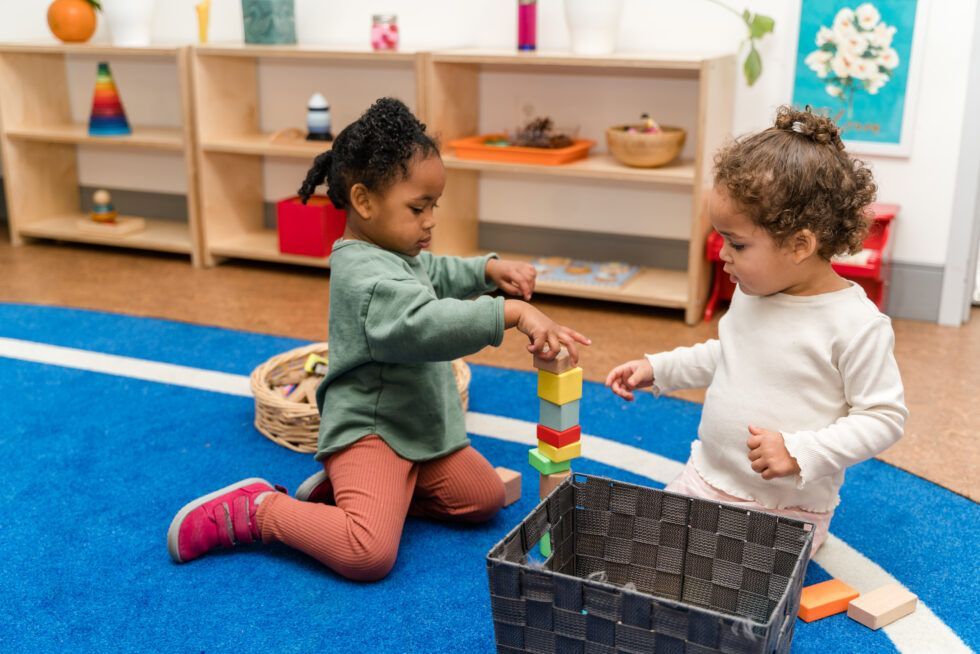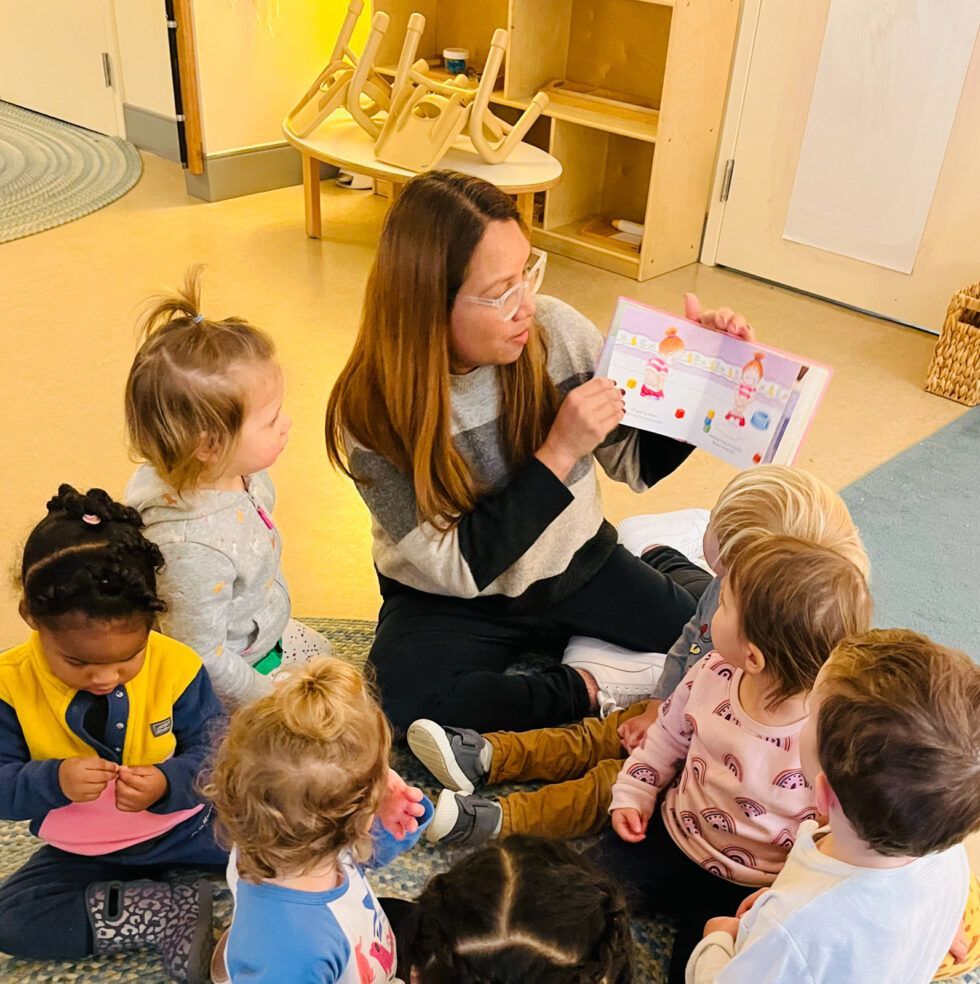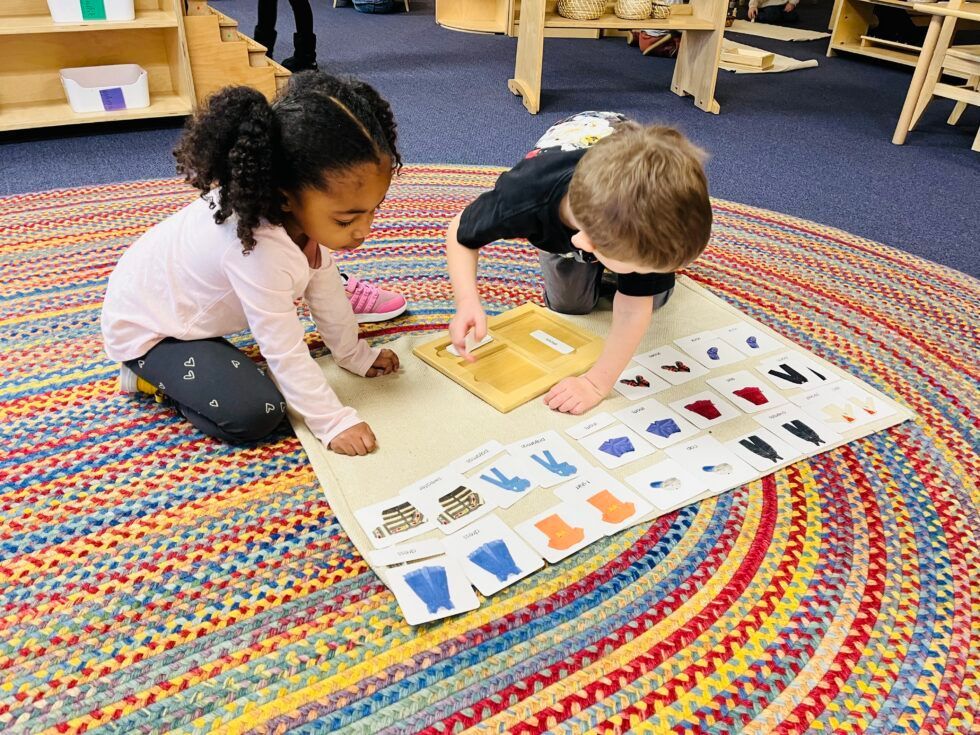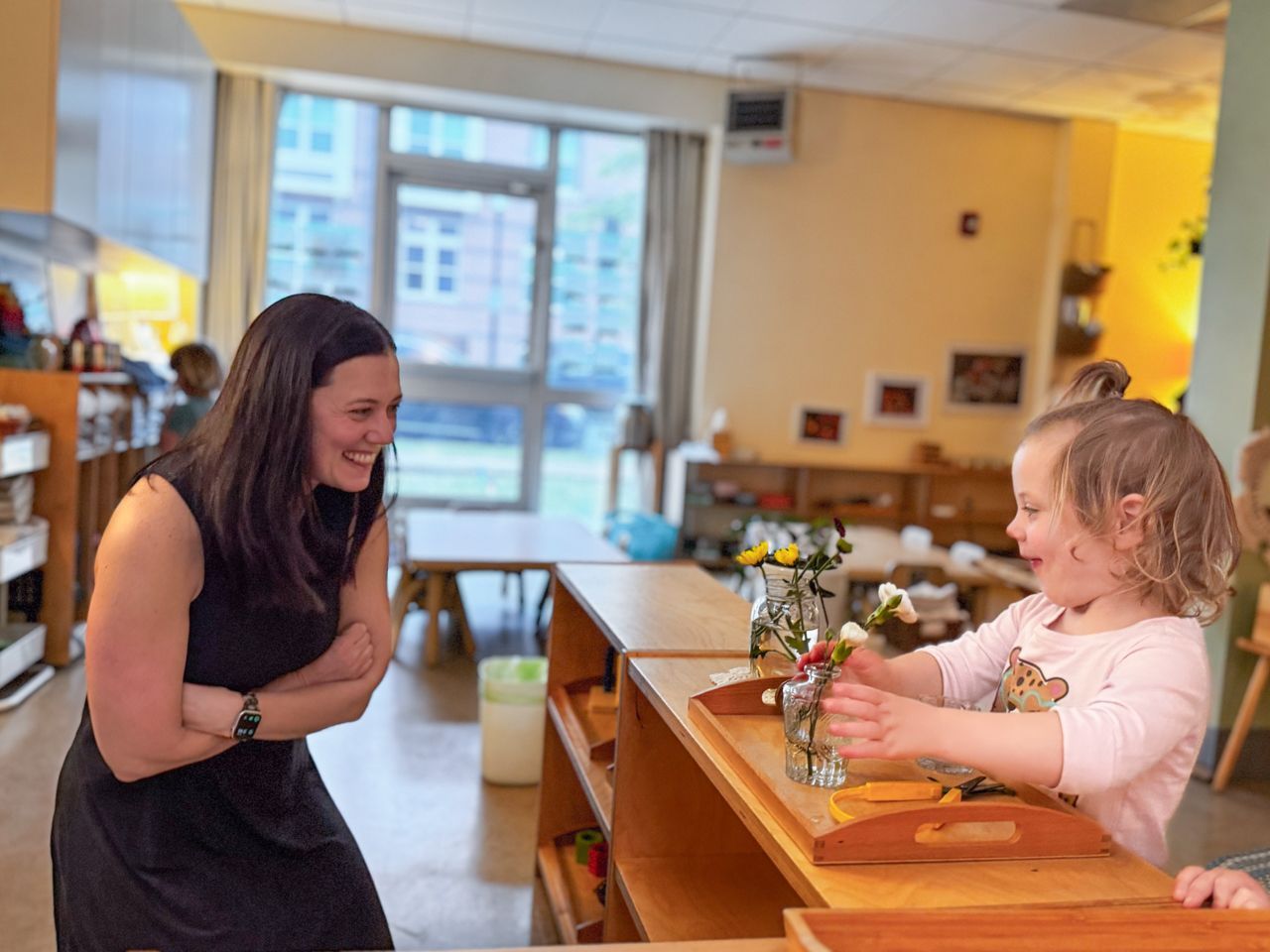Montessori Education

In Montessori, we emphasize two words on a pretty regular basis: grace and courtesy. But what does grace and courtesy really mean? How are they an essential part of Montessori classrooms? And what role do they play in supporting the development of social relationships? What is Grace? What is Courtesy? Let’s first isolate each word. Google’s Oxford Languages defines “grace” in two parts: 1. simple elegance or refinement of movement, and 2. courteous goodwill. Courtesy is defined simply as: the showing of politeness in one’s attitude and behavior toward others. Stated another way, grace and courtesy comprise how we move through the space around us showing respect for ourselves and others. Grace & Courtesy Lessons In our toddler and primary classrooms, grace and courtesy are considered to be part of practical life learning and we devote significant time to grace and courtesy lessons. For example, the adults give explicit instruction on how to walk around someone’s work on the rug, how to wait your turn, how to offer help, how to tuck a chair under the table, or how to introduce oneself. These lessons are offered one-on-one or in small groups and we often use role playing as a technique for exploring the skills. We are very careful about how we introduce grace and courtesy to children. If we see something that needs to be addressed, we try to avoid confronting the child in the moment and we never offer grace and courtesy lessons as a form of punishment or correction. We are careful about this because children are often embarrassed when corrected by adults on the spot. When this happens, they can feel disrespected and not safe, and thus much less likely to perform the act on their own accord. In the Older Years As children enter their elementary and adolescent years, our approach shifts slightly. Elementary-age children are more focused on their social interactions and are learning how to navigate the ups and downs of friendships. As such, much of the grace and courtesy work at this level provides children with tools for communicating directly and respectfully, sharing perspectives thoughtfully, and even being discreet about something potentially embarrassing. In addition, they are learning how to interact with the broader community as they arrange visits or interviews, conduct themselves according to the norms of different communities, and explore how to be a host or be a guest. The Goal The goal in Montessori education is that these acts of grace and courtesy aren’t rigid expectations, like insisting that children say please and thank you. Rather, they become part of how children want to be and interact. Dr. Montessori is quoted as saying: “…the essential thing is that [the child] should know how to perform these actions of courtesy when his little heart prompts him to do so, as part of a social life which develops naturally from moment to moment.” Like all other exercises in Montessori prepared environments, we offer opportunities to regularly practice and repeat grace and courtesy skills. Because these experiences are part of the normal functioning of the day, they provide a respectful way for young people to learn expectations and for adults to provide scaffolding and assistance for social skills. The Results In time, as we offer these grace and courtesy opportunities and give children a safe place to practice, our young people eventually perform these skills independently. When you visit our school, you’re likely to see two young children sitting together, the older one showing the other how to put on their shoes. Or perhaps if you observe in a primary classroom, you might see a child patiently waiting with their hand on their own shoulder, our silent signal that we need someone’s attention, until a teacher is available to help them. Our children bring a sad classmate a tissue or rush to assist when someone has a spill. They tuck their chairs under tables so others don’t trip over them. They carefully place a tray upon a table. They greet each other and adults in the hallways. They hold the door open when they see someone coming their way. In the process, Montessori children move beyond the basic niceties and think deeply about their impact on those around them. We’d love to show you this in action! Schedule a tour to see the ways that grace and courtesy help children recognize themselves as caring individuals within a supportive community.

Our children’s early years are essential for developing strong language skills. So, in Montessori, we pay particular attention to how we support young children’s receptive and expressive language development. The exercises we use to enhance children’s spoken language development don’t have a large physical presence on the classroom shelves because many are games or conversations. These spoken language activities are a prominent part of children’s daily experience in our Montessori classrooms. The Purpose Young children are expanding their vocabulary at an astonishing rate: from recognition of about 50 words at age one, to about 1,000 words by age three, to at least 10,000 words by age five! We know that children absorb language effortlessly, so in Montessori we provide children with expansive vocabulary enrichment through a series of mindful oral language exercises. We also recognize that the adult is the most important language material in the classroom, so we use precise language whenever we are communicating with children. We offer rich, full, and beautiful language because we know we are providing an essential foundation for children. Our Favorite Activities We keep oral language alive and lively through a variety of purposeful activities. Classified Picture Books We choose wordless picture books that focus on a theme that is familiar to children or that are classified around a sequence (e.g., Amanda’s day). In the classroom, we sit down with one child and take a “picture walk” through the book to help the child interpret the picture clues. The adult doesn’t tell what is happening and rather asks the child about what they see. This process not only helps children develop their expressive language skills but also sets the stage for future reading and story interpretation. True Stories When we tell true stories, we invite a group of three to five children to join us. Sometimes we use little cultural artifacts or objects as we share stories about everyday life, or we offer little snippets about geography, art, music, biology, and geometry. The key to these stories is that they are based in reality and are not fictional stories. In sharing these stories, we offer children interesting and rich language, as well as spark their interest and imagination! The Question Game For this activity, we gather a small group of children who have a common experience. Then we ask a series of questions about that event. Being mindful to solicit answers from a variety of children, we focus on asking questions that can form a sequence and illuminate details. We then summarize the story based upon the children’s responses. Because children live in the moment and often don’t remember what happened yesterday, we try to do this activity on the day the common experience occurs. In addition to modeling how to tell a story and how to create complete sentences from one-word answers, we are also providing preparation for creative writing by taking an event and structuring it sequentially and highlighting details. Conversation at a Picture To engage children in this activity, we invite a small group to a piece of artwork on display and start a conversation about what the children observe in the picture. We focus on using “w” questions such as: What do you see? Where do you think they are? Why do you think…etc. We keep eliciting conversation by asking more questions: Do you see anything else in this area? Do you notice anything else about this scene? When the conversation begins to fade, we summarize the observations in a small narrative or story. Reading Literature We work to read quality children’s literature every day! When we do so, we highlight the book’s title, the author, and the illustrator. Under the age of six, children live in the present and are trying to adapt to the world around them. Because they are still too young to distinguish between fantasy and reality, we make sure to choose books that are grounded in reality. Reciting Poetry When reciting poetry, we do so from memory. We recite poems over a series of days and, just like with singing, children learn the poems by themselves and love to recite them. Children also absorb phonetic skills from any onset rhyme. Popular nursery rhymes support children’s process of learning to read! Objects in the Environment This activity is actually a series of games that follow a “listen and do” type format. After gathering a group of children, we explain that will say something to do and when a child hears their name, they get to do that action. We start with simple, one-step commands: Touch a shelf. Stand by a window. Walk around a table. We then progress both in complexity in terms of the types and categories objects as well as by offering double commands: Find a friend and shake hands. Choose a book and place it on a table. Play a bell and hum a tune. While quite fun, these games also have the added bonus of helping children develop their auditory memory. Classified Pictures For this work, we have collections of pictures representing categories of objects (types of transportation, furnishings, appliances, playground equipment, etc.), as well as cards with illustrations of geographical, geometrical, biological, and scientific terms (parts of a flower, land and water forms, polygons, etc.). When doing this activity with a child, we first name the classification (“These are all fruits.”) to help establish mental order. Then we play a little game to teach the vocabulary for the items pictured on the cards. The Sound Game The sound game helps children become aware of the phonemes in our language. We collect several known objects and play an I Spy type game that isolates the beginning sounds of the objects, then later the ending sounds, and eventually the sounds in the middle of the words. The whole purpose of this game is to help children become aware of the sounds that make up words. Spoken language activities are the foundation for children’s receptive and expressive vocabularies. In addition to enhancing their vocabulary and providing an overarching structure for future work in writing and reading, engaging children in language games also helps increase their listening and comprehension skills. Above all, we take the time to listen to children’s own spontaneous efforts to express themselves, so that they gain confidence in speaking and feel that their thoughts have meaning. Come see (and hear!) all this spoken language work when you schedule a visit. We love to share what we do!

In Montessori, we focus on supporting children’s intellectual, emotional, social, and academic growth. A scientist first and foremost, Dr. Maria Montessori was interested in creating optimal learning environments so that young humans could reach their potential with as few adult-created obstacles as possible. Thus, in Montessori, we think differently about the role of the adult and even how learning materials are used. One of the adults’ roles, for example, is to put children in touch with activities so that children can learn through doing. With this experiential approach, children can use their hands, engage through movement, and even make mistakes. The adults are not the dispenser of information or even the right answers. Rather, we help children learn how to learn, which includes understanding themselves as learners, figuring out how to use failure as a starting place for growth, and exploring the process as much as coming to an end product. To achieve this, the Montessori method has a very intricate approach that relies on providing children with building blocks over the course of their educational journey. Montessori guides engage in an individualized, long-term process of introducing children to a series of skills and information, all to help children experience ah-ha moments. We know that when children discover something for themselves, they own that information deeply. Sometimes we’ve seen children feel like they are the first discoverers of a new piece of knowledge, a linguistic tool, or a mathematical trick. One of the gifts of a Montessori education is that children have the opportunity to discover so much in their own way and in their own time. Rather than rote learning or memorization, children are given the chance to make connections. Through multiple learning experiences, these connections become interconnections that create complex neural pathways that often show up later in life. There is a reason why Andrew McAfee, a MIT research scientist and author of The Geek Way describes Maria Montessori as “the patron saint of geeks” and refers to his own Montessori education as a “great gift.” In his books he describes how a number of notable former Montessori students have gone on to become business innovators and leaders of successful companies that eschew traditional hierarchical structures and rigidity. Instead, they are reimagining their companies using the same principles that Montessori used in creating her schools. If this process of discovery isn’t happening for some reason, Montessori guides are trained (and the materials are designed) to provide scaffolding so that children can still build upon prior knowledge and make progress toward mastery. Even so, sometimes extra support is needed and when this is the case, collaboration is key. Montessori works most effectively when there is a strong alignment between home and school. So, if a child needs some additional help or outside services, we work to coordinate with a tutor or support person so that everyone is working in alignment. If you ever want to show your child a shortcut or introduce some outside-of-school practice, we request that you take a moment to check in with your child’s classroom teacher. It might just be that your child is on the brink of discovery. They could be at the culmination of years of carefully designed preparation. They might be just about to make an important connection or realize a significant insight. And when someone is on the edge of understanding, it is a tremendous gift to allow them to have their moment! We thank you in advance for appreciating the intricacy of our approach and for connecting directly with us if you want to explore how to support your child(ren)’s learning. And of course, if you are interested in more about what happens when children can discover the process for themselves, we’d love to show you! Schedule a tour to see how Montessori students own their knowledge in powerful and profound ways.


